Potrebujeme váš súhlas na využitie jednotlivých dát, aby sa vám okrem iného mohli ukazovať informácie týkajúce sa vašich záujmov. Súhlas udelíte kliknutím na tlačidlo „OK“.
ASTM E1201-87(2012)
Standard Practice for Sampling Zooplankton with Conical Tow Nets
Automaticky preložený názov:
Štandardné praktiky pre vzorkovanie zooplanktónu s kónickým Ťažná Nets
NORMA vydaná dňa 1.12.2012
Informácie o norme:
Označenie normy: ASTM E1201-87(2012)
Poznámka: NEPLATNÁ
Dátum vydania normy: 1.12.2012
Kód tovaru: NS-40846
Počet strán: 3
Približná hmotnosť: 9 g (0.02 libier)
Krajina: Americká technická norma
Kategória: Technické normy ASTM
Kategórie - podobné normy:
Anotácia textu normy ASTM E1201-87(2012) :
Keywords:
ICS Number Code 13.060.30 (Sewage water)
Doplňujúce informácie
| Significance and Use | ||||
|
3.1 The advantages of using conical tow nets are as follows: 3.1.1 They are relatively inexpensive and highly versatile in a variety of inland, estuarine, coastal, and marine waters. 3.1.2 They can be used from a small or large powered boat with a minimum of auxiliary equipment. 3.1.3 They can be used to collect qualitative samples and semiquantitative samples when fitted with a flowmeter and even better samples when fitted with a companion meter on the outside of the hoop to monitor filtering efficiency. 3.2 The disadvantages of conical tow nets are as follows: 3.2.1 When equipped with a flowmeter they require frequent maintenance including calibration and, in some types, lubrication. 3.2.2 They are effective only where drawn through a stream of water having considerable thickness. They are not suitable for collecting samples from a small or restricted region. 3.2.3 They are not suitable for collecting in very shallow water. 3.2.4 They are clogged by grass beds, coelenterates, and filamentous algae. 3.2.5 When used with a flowmeter, they collect only qualitative samples, or semiquantitative samples. 3.2.6 When sampling discrete depths using a horizontal tow, the sample can be contaminated from other depths during the deployment and retrieval of the samples if opening and closing devices are not used. 3.3 There are several special considerations that shall be observed when using conical tow nets. They are: 3.3.1 Conical tow net samplers are designed to be towed at speeds less than three knots; however, greater speeds have been used for the larger nets with a concomitant increase in capture.2 3.3.2 A conical tow net 0.5 m in diameter or larger shall be used to reduce avoidance by organisms.3.3.3 The nets shall be washed frequently and inspected for pin-size holes, tears, net deterioration, and other anomalies. 3.3.4 Nets should be allowed to dry while suspended full length in air and in subdued light prior to storage. 3.3.5 Lower catches per sample may result when collections are made during the day. These are particularly noted in the larger zooplanktons. Species
|
Fresh |
Marine |
||
|
Habitat |
Size Range |
Habitat |
Size Range |
|
|
Protozoans (single cells) |
|
6 to 1,000 μ |
|
−2.0 mm |
|
Ciliophora (ciliated single cells) |
few fresh |
22 to 600 μ |
|
|
|
Coelenterata |
few fresh (Hydras) |
<20 mm |
|
|
|
Ctenophora |
|
|
|
10 to 121 mm |
|
Platyhelminthes (flatworms) |
|
1 to 30 mm |
inland waters |
0.5 to 40 mm |
|
Nemertea (Proboscus worms) |
|
<20 mm |
great variation |
5 mm to 6.5 m |
|
Nematoda (Round worms) |
|
<2.3 mm |
|
7 mm |
|
Nematomorpha (horsehair |
pools, slow brooks |
10 to 70 cm |
|
|
|
Gastrotricha |
most fresh (shallow) |
70 μ–615 μ |
|
|
|
Rotifera |
90 percent fresh |
80 μ–1,500 μ |
|
|
|
Bryozoa (moss animals) |
some fresh; |
|
most species encrusting |
|
|
|
statoblasts |
0.4 to >1.0 mm |
statoblasts |
|
|
Chaetognatha (arrowworms) |
|
|
high salinity |
up to 40 mm |
|
Annelida (segmented worms) |
|
|
|
|
|
Oligochaeta |
most fresh |
0.5 to 5 mm |
very few |
|
|
Polychaeta |
few fresh |
|
most spp. small except Nereis |
up to 50 cm |
|
Hirundinea |
most fresh (standing |
adults 5 mm to 45.7 cm |
few marine |
|
|
|
waters) |
|
|
|
|
Arthropoda |
|
|
|
|
|
Crustacea |
|
|
|
|
|
Branchlopoda |
most fresh |
3 mm to 30 mm |
some marine |
10 mm |
|
Cladocerans |
most fresh |
up to 3 mm; 0.2 to 18.0 mm |
few marine |
|
|
Ostracoda |
|
|
|
|
|
Copepoda |
|
|
|
|
|
Calenoida |
|
nauplius—<4.0 mm |
|
0.5 to 10.0 mm |
|
Cyclopoida |
|
nauplius—<3.0 mm |
|
<0.5 to 1.0 mm |
|
Harpacticoid |
|
nauplius—1.0 mm |
|
<0.5 to 1.0 m |
|
Ectoparasites |
some fresh |
5 to 25 mm |
some estuarine |
5.5 to 25 mm |
|
Cirripedia |
|
|
estuarine/marine:nauplii |
|
|
Mysidacea |
few in cold lakes |
8 to 30 mm |
|
|
|
Amphipoda |
some fresh |
5 to 25 mm |
|
5 to 30 mm |
|
Decapoda |
some associated with debris |
15 to 200 mm |
|
2.0 mm to 20 to 40 cm |
|
Insecta (aquatic) |
most fresh |
|
|
|
|
Mollusca |
|
|
|
|
|
Gastropoda |
|
|
|
|
|
|
|
adults <2 to 70 mm |
|
8 to 80 mm trochophore |
|
Pelecypoda |
some fresh |
adults 2 to 250 mm |
most have free |
|
|
Echinodermata |
|
|
|
|
|
Fish eggs/larvae |
eggs 0.75 to 3 mm |
400 μ to 505 μ |
|
|
|
|
larvae 1.5 mm |
|
|
|
1.2 This standard does not purport to address all of the safety problems, if any, associated with its use. It is the responsibility of the user of this standard to establish appropriate safety and health practices and determine the applicability of regulatory limitations prior to use.
Podobné normy:
Historická
1.9.2011
Historická
1.4.2013
Historická
1.4.2013
Historická
15.1.2008
Historická
1.5.2008
Historická
15.6.2011


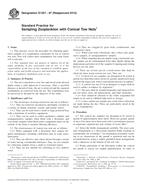
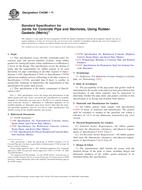 ASTM C443M-11
ASTM C443M-11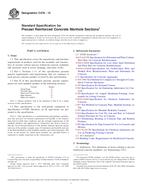 ASTM C478-13
ASTM C478-13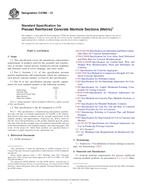 ASTM C478M-13
ASTM C478M-13 ASTM C913-08
ASTM C913-08 ASTM C966-98(2008)..
ASTM C966-98(2008)..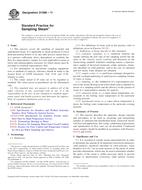 ASTM D1066-11
ASTM D1066-11
 Cookies
Cookies
